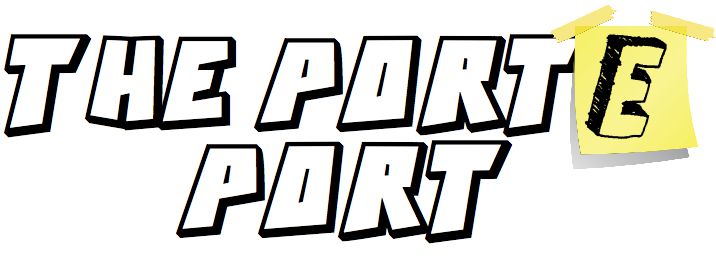Creating Something Real
Credit: IMDB
Think of your favorite stories.
Movies, books, TV, whatever.
What is the first thing that you think about in those stories? What draws you in about them?
When I think about some of my favorites, specific things come to mind.
Bilbo Baggins
Arya Stark
Arthur Morgan
Okoye
Dr. uhh Ian Malcolm
What are all of these? The characters of the story, of course.
We are, after all, just the main characters of our own story, it's only natural to bond first with something familiar.
So much plays into making a story great, like pacing, imagery, themes, cinematography, gameplay, acting, and on and on, but so much of that relies on solid characters first.
This has been something I struggle with the most. How do I make words on a page come together to create a deep, believable person?
This person has a life off of the page. They have hopes, fears, an everyday routine, people they like and don't like, maybe they hate Papa John's pizza (rightly so), or maybe all they want is a little break from the mundane.
Whatever this character on the blank pages ahead will be, one thing is certain: if they don't feel like a real person, who gives a shit about their story?
That is a terrifying prospect. I could make some kick-ass scenes, extrapolate on the most vibrant descriptions, or have beautiful symbolism popping out of every page. None of that will be impactful if my characters don't have any depth to them.
I lean towards making descriptions and theme a larger part of my writing than anything else. One of my favorite authors is Cormac McCarthy, and he can essentially write an entire story out of prose, and I will read the hell out of it. He's the author that makes me look at my own writing and feel that weight of embarrassment I talked about in my first post.
Naturally, because of how enamored I am with his style, I lean towards focusing on those same things in my own writing. But Cormac McCarthy I ain't. My prose carry on nothing like his, and so many of my scenes begin to feel flat because it's missing a key element.
Who cares what happens in these overly described scenes if no one cares about the characters in them?
(Side note: I'm thinking of doing a little series on this blog...uggg that word...featuring scenes that haunt me long after I read them, watch them, whatever, and Cormac McCarthy will be making a few appearances)
Luckily, I think some of the answers to my character problem can be solved with the style I lean towards: imagery. Describing the characters look and what they have on them is a surefire way to start the process.
Even more important, in my opinion, is to focus on what the characters themselves notice. What in a scene is the character focusing on? Even third person narratives can easily follow what a character is observing.
How they handle something would be completely different than how another character would deal with it, and thinking from that angle has helped me bring some personality to my scenes.
A good example is from a fantasy short story I've been working on longer than I like to admit. I've re-written the entire thing and focused on the characters instead of the action. This allowed that action to pop out all the more now that the reader can see something from the character's perspective.
Here's a snippet from the first draft:
The wind rustled through what was left of the shriveling crops on the hillside. The stalks of wheat sounded like the wood chimes hanging in the porches on the ranches, barely able to hold on any longer to the dust they sat in.
The market was empty. There was a thin illusion of long abandonment. Hawks hung still on the strong breeze looking for field mice across the thirsty countryside. The bells did not chime when they should have in the temple tower that reached out to the sky, casting its long shadow over everything else.
In this small bit, you get a little about what's going on. The drought in the fields, a strange quiet, and a foreboding temple that looms above all else. There's themes, literal foreshadowing, and background, so the reader knows some details going into this story.
This paragraph shows up at the very beginning. I love movies, and I think of many of my scenes the way a movie would establish a setting. Long shots getting closer and closer, that's just how my brain works a lot of the time.
This isn't always good, it takes up the reader's time and if there isn't a reason to describe these things, then why is the reader going to stick around? Where's the connection there? Especially for a short story that needs to happen sooner rather than later.
Here's the same part of the story in a later draft:
How long had she been sitting in the window looking at the sun hit the little purple flowers that struggled at the end of the alley? The sunrise squeezed through the narrow stone buildings where the flowers became thick, colorful lenses just before the cobblestone began to clap with the bustle of the morning. They were the only bright things in the alley. Brown stone, once red perhaps that radiated outwards from the market, and grey walls that made a small space feel even smaller. Once the sun rose high enough, the temple bell tower would cast its shadow back down the alley, and she would not see the sun from home until the next morning.
Some of the same descriptions show up. There are the streets of this town, the temple's shadow over it, even small references to a quiet start before the streets became loud with comings and goings. The nods to the drought come later, it's not the first thing a reader needs to know about.
There's something distinctly different here, and it's not just the more specific details. It's through the perspective of the "she" in the paragraph. She is looking at the flowers, admiring their colorfulness in contrast to everything else. That's really the only major difference. It's not first person, yet the reader can still get into a perspective of the character that allows them to see a little personality come through. It's enough to add flavor and depth to a character before getting to know them more.
It's the first thing we see of this character, and that's important because there's something so innocent about admiring flowers. That innocence is exactly what I want to transfer to a reader early on.
Now I'm seeing all of my stories, past, present, and future, through this lens. What are the characters doing? What are they looking at? What are they focusing on in a scene? That alone can be enough to make the characters feel more real.
Finding something real is all I want. Like I said before, I want to be honest here. Right now that means pointing out how I need to grow as a writer, maybe that makes me less credible because I'm sure some keen readers can see the weaknesses in the later draft too, but I want to be real. I want to grow, and pointing these things out for myself is how I do it.
Making a fictional person feel like a real one is a complicated task. Yet, nothing makes a story more immersive. We see a bit of ourselves in these characters as we connect to our favorite stories. The first people to put themselves into those characters are the authors themselves. Allowing myself to be brave enough to place my fears, hopes, anxiety, and vulnerability in a character is an everyday battle.
If I want this as my career, I better get used to putting myself out there.
I’m a geek, and if you found your way here, you are probably one too. Sign up below to explore more geeky storytelling advice from our favorite franchises.







